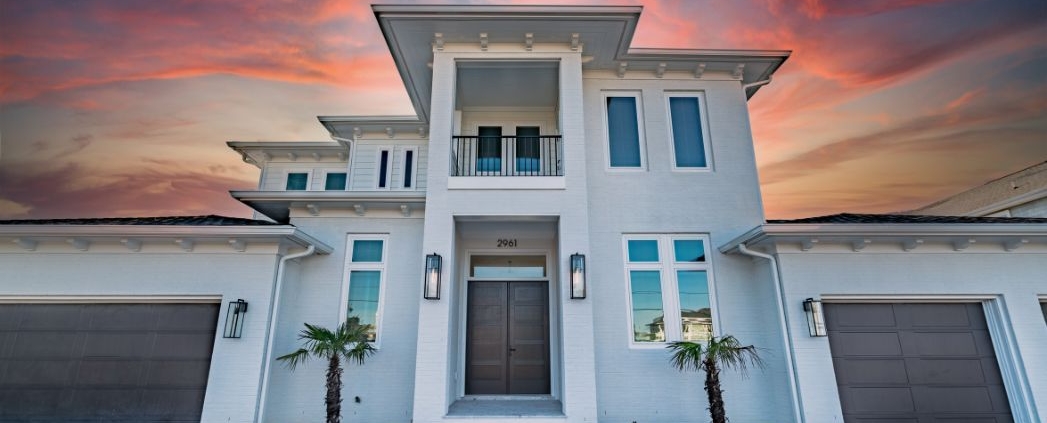Custom Home Building – Turning Your Concept into Reality
When creating a living space that’s uniquely your own, there’s no better approach than building a custom home.
With a custom home, you get the opportunity to design a space tailored to your needs and lifestyle, which you simply can’t get from pre-fabricated or existing floor plans. Plus, there’s nothing quite as satisfying as watching your dreams come to life.
In this guide, we will take you through everything you need to know about designing the perfect home for you and your family, from the planning phase to final inspections and closing.
Defining Custom Home Building
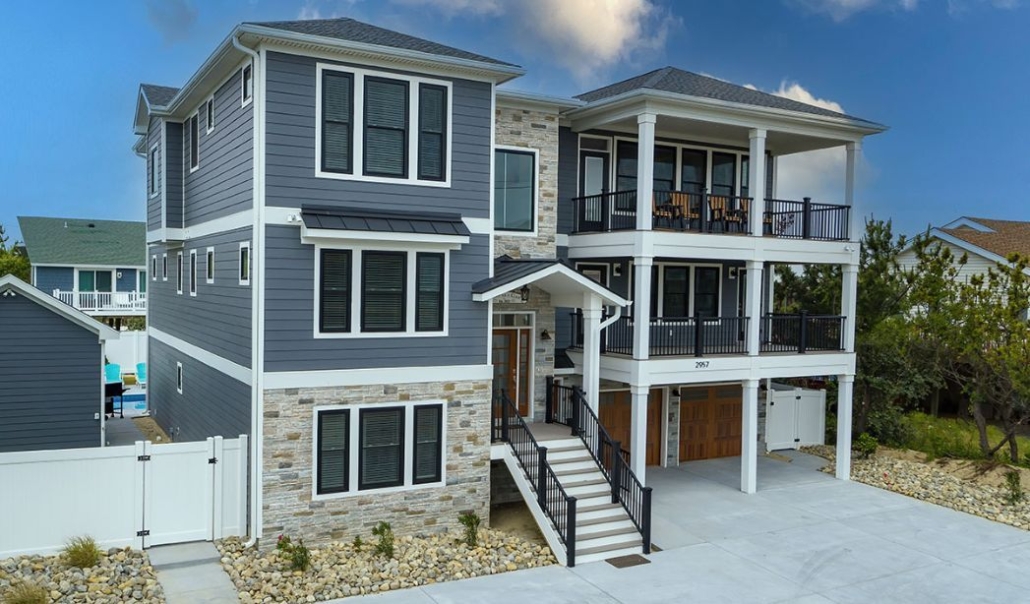
A custom home build is one where you work hand in hand with an architect and homebuilder to plan, design, and enact every detail of the home’s layout and construction.
From the small fixtures to the doorknobs, the entire process is incredibly detail-oriented.
Note that it’s a very different process than purchasing a common spec home, usually made with average homebuyers in mind.
Let’s look at some of the main benefits of the custom home-building process before we look at how to build a custom home.
When you’re ready to start building your custom home, get in touch with us here!
10 Benefits of Custom Home Building
When weighing both options, you might ask, “Is building a custom home worth the extra work?”
Here are a few of the major advantages of building your own home:
- Personalization – From the foundation to the roofing, building a custom home means taking your style and personality and turning it into something uniquely tangible.
- Quality Control – You get a say in what materials and construction methods are and aren’t used, providing better quality assurance.
- Energy-Efficiency – Minimize your environmental footprint by installing eco-friendly features like geo-thermal HVAC systems or modern high-efficiency windows.
- Sustainable Features – From bamboo to cork to slate, there are several different types of eco-friendly materials which can be used to make your home more sustainable.
- Unique Design – No matter your aesthetic, building a custom home allows you to create a unique living space that checks all your boxes.
- Tailored Layout – Do you need a dedicated home office for you and your spouse? How about a large kitchen for extended family dinners? The world is your oyster when it comes to design!
- Modern Technology Integration – Integrate modern home smart technology, such as high-end security systems or smart heating and cooling systems.
- Long-Term Satisfaction – When you can build a home with high-quality materials that cater to your needs, you get to enjoy the long-lasting satisfaction that comes with it.
- Freedom of Choice – From the ground-floor layout to the interior paint, every tiny aspect of your custom home is based on your choice.
- Enhanced Resale Value – Most potential buyers are willing to spend more on custom homes, as they’re often built with higher construction standards, better materials, and generally command higher resale values.
Fleshing Out the Plan: 7 Steps
The first step in building a custom home is arguably the most important, as it involves setting your budget, outlining your vision, and finding the perfect site.
1. Goal Setting
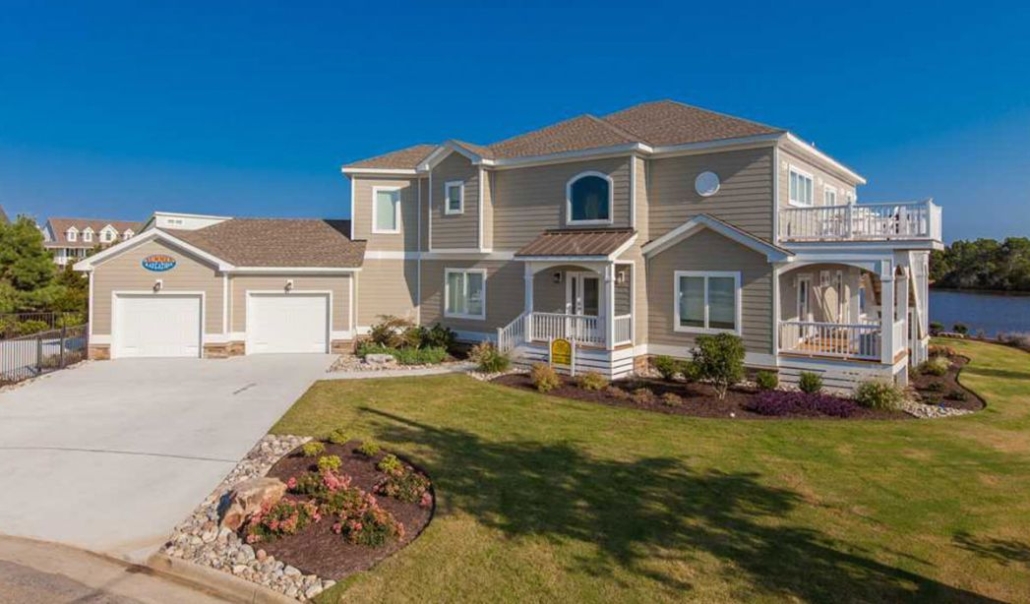
The first thing you need to figure out is, what are your goals for your custom home?.
At this point, we like to help our new clients realize their vision, whether it be a thoroughly modern home with integrated smart tech or a sustainability-focused project built on eco-friendly materials or a combination of both.
2. Budget Creation
Once your main objectives are know to us, we can guide you through the process of developing a realistic budget for building a custom home. There are many categories of items and costs to be considered and you’ll need to secure all necessary “permissions” and account for all costs and expenses, including:
- Land acquisition
- Acquisition costs
- Building Plans
- Selection of Materials
- Site surveying and engineering
- Permitting and related costs
- Sewer, Septic, and Water Services permitting and costs
- Building Material cost
- Trades and Labor
- Contingencies
With material selections and budget determinations made, and an appropriate construction contract entered into with a well-qualified contractor, you can build your dream custom home without forgoing your peace of mind and financial stability.
3. Site Selection
Selecting the ideal location for your dream home is an essential step in the journey to building your perfect residence.
When evaluating potential sites, consider a comprehensive array of factors, including the terrain’s characteristics and the site’s accessibility to essential amenities like schools, shopping centers, and medical facilities. For lots that already have existing structures, it’s important to factor in the costs and logistics of demolition and site preparation.
This detailed approach ensures that your chosen location not only meets your current needs but also supports your long-term vision for your dream home.
4. Architectural Design
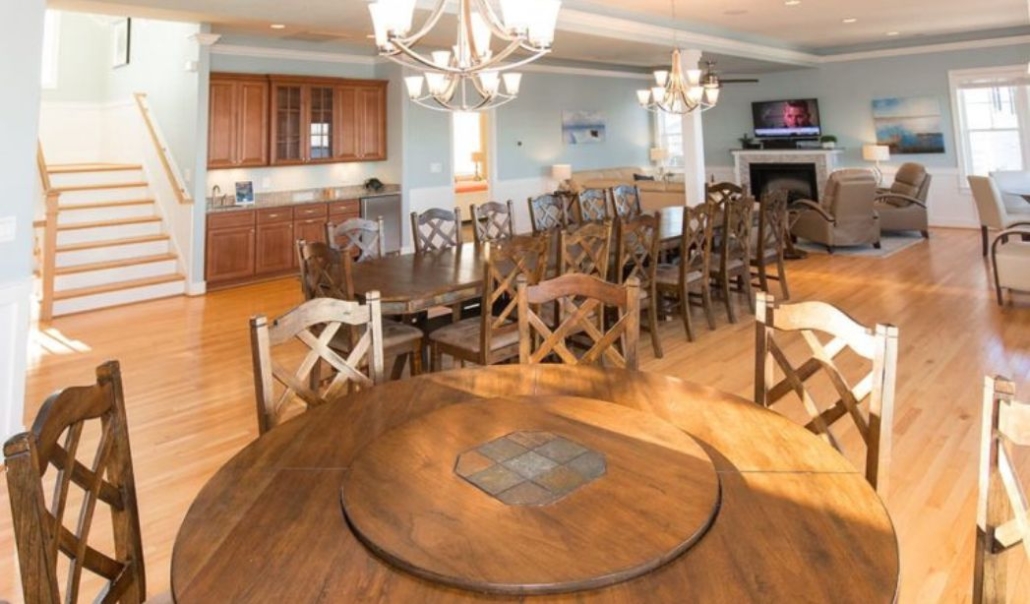
You’ll collaborate with an experienced design team at this step in the process who can turn your vision into tangible blueprints. Working with a seasoned design team is crucial, as they can take your design preferences and create a functional and beautiful custom home which incorporates all the elements you’ve envisioned and even make helpful suggestions which will further enhance the home of your dreams.
5. Floor Plan Development
The floor plan development phase is an evolutionary step in the overall architectural design, ensuring that the home layout serves your needs and wants.
This stage involves meticulous planning and collaboration with design professionals to optimize space utilization and functionality. It’s where aesthetic preferences are balanced with practical requirements, creating a harmonious and efficient living space.
Careful consideration is given to factors like natural light, flow between rooms, and future adaptability to accommodate changing lifestyles or family needs.
6. Inspiration Gathering
This phase allows you to delve into various architectural styles, color schemes, and layout configurations, helping you envision the potential of your own home. By examining our diverse range of custom homes, you can identify elements that resonate with your personal taste and lifestyle requirements.
It’s a process of discovery, where you can mix and match ideas to formulate a unique and personal home concept that truly reflects your individuality.
The inspiration-gathering part of the process is undoubtedly the most exciting, as it gives you time to explore current home designs and assemble a design palette of sorts.
Look at our portfolio of custom homes in Virginia Beach to see if our designs spark inspiration.
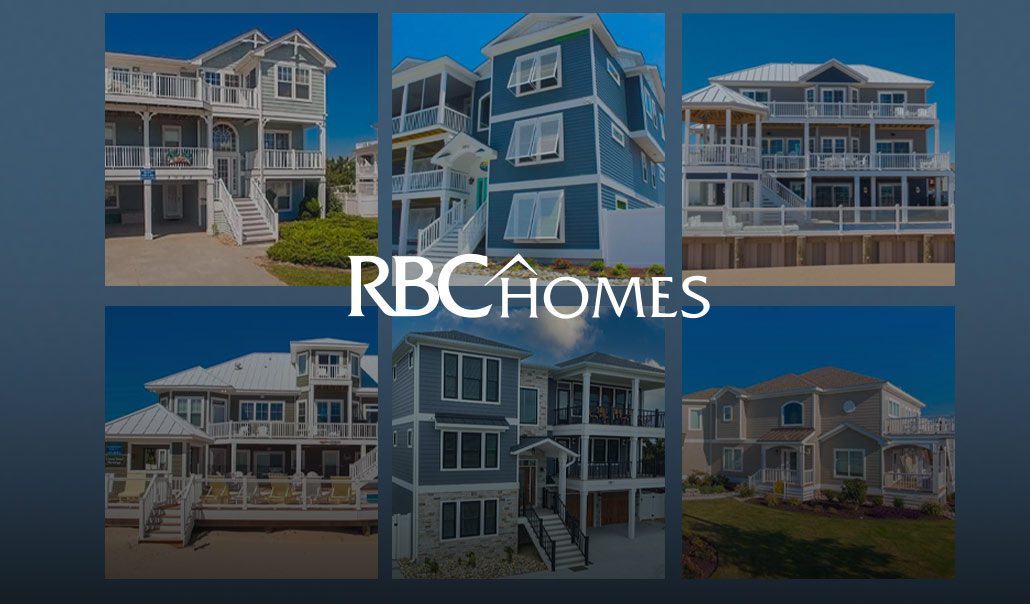
7. Initial Research
Lastly, you’ll conduct your initial research to better understand specific considerations for your chosen build site, such as building codes, zoning regulations, and setback requirements.
This phase involves an in-depth investigation into local environmental factors, such as soil quality and topographical features, which can impact construction. Engaging with community planning and development offices early on can provide crucial insights into future area developments that may affect your property.
It’s also important to assess utility access and infrastructure, including water, electricity, and internet connectivity, to ensure they meet your needs. Consideration of the local climate and weather patterns will guide appropriate design and material choices, ensuring your home is both durable and comfortable.
This research lays the groundwork for a smooth building process, helping to avoid any unforeseen challenges or delays. It’s a step where thoroughness pays off, ensuring your dream home is both compliant with regulations and perfectly suited to its environment.
Selecting a Custom Home Builder
When building a custom home, your final product will only be as good as the design team and builder you work with, so finding a skilled and experienced custom home builder with a top-tier reputation, team, and portfolio is key.
Of course, your chosen builder should also commit to you and help you refine your vision of your perfect home, guiding you at every step of the design, permitting, selection, and construction processes to create a one-of-a-kind finished home…your new dream home.
There are a few reasons folks in Virginia Beach choose RBC Homes as their professional luxury custom home builders. With more than 30 years of experience, award-winning homes in our portfolio, and a deep commitment to our clients, we’re proud to say that we’ve built some of the finest luxury custom homes in the region.
Get in touch with us today so we can discuss your project!
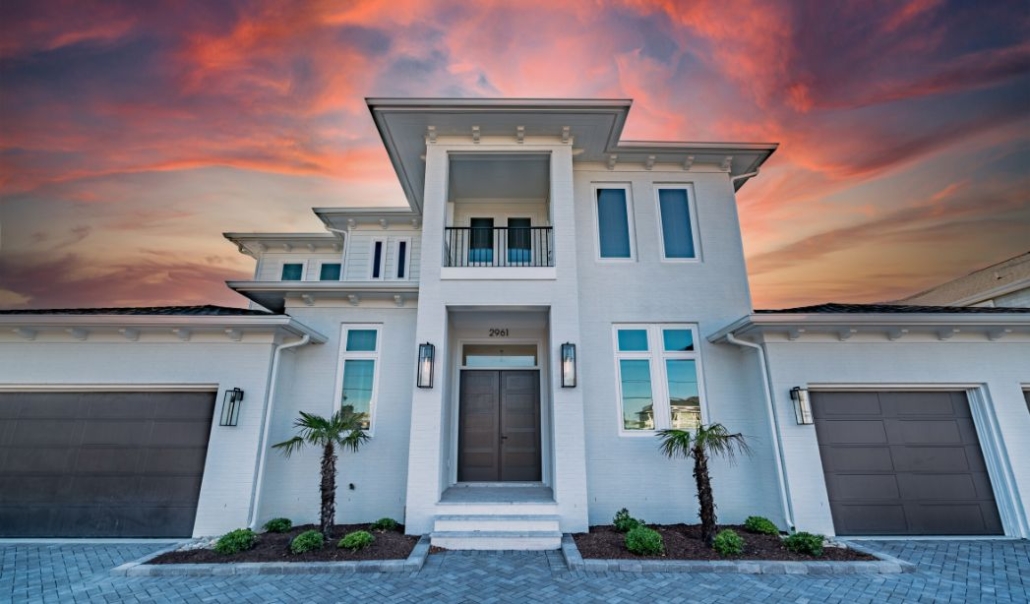
Designing Your Dream Home: 10 Factors to Consider
There’s much to consider during the design process, from the overall architectural style to the smallest functional fixtures.
1. Architectural Styles
One of the first things you’ll want to do is determine your stylistic preferences. Do you want a charming craftsman, a clean modern build, or do you prefer another style of home?
This decision will significantly influence your home’s overall feel, from the layout to the finishing touches. Exploring various architectural styles can help clarify what resonates with you, whether it’s the elegant simplicity of a contemporary design or the rich details of a traditional style.
Your choice will also dictate the types of materials and color palettes used, as well as the landscaping that complements the architecture. It’s important to consider how your preferred style will blend with the surrounding environment and neighborhood aesthetic. Reflecting on how different architectural styles align with your lifestyle and personal tastes can make your home not just a place to live, but a true extension of your identity.
Involving an architect or designer at this stage can provide valuable insights and creative ideas to bring your vision to life.
2. Floor Plans
When our clients develop a floor plan, we urge them to think about how they operate daily. Think about how you would like the rooms to flow into one another or what kind of layout would make your daily life more functional.
This reflection should include considering the size and placement of each room, ensuring that they meet your specific needs and preferences. For instance, families might prioritize open-plan spaces that encourage interaction, while others may prefer distinct, separate rooms for privacy and quiet activities. The positioning of windows and doors is also crucial, as it affects both natural lighting and movement patterns within the home.
Remember to factor in future needs, such as space for growing families or areas that can be adapted for different uses over time. Accessibility is another key aspect, especially if the home needs to accommodate individuals with mobility challenges.
Ultimately, a thoughtfully designed floor plan can greatly enhance comfort and convenience, making your home a truly personalized retreat.
3. Interior Layout
Similar to your floor plan, your interior layout will consider space and functionality. Do you frequently entertain guests? You might need a half-guest bathroom in the living area. Are you a dog family? If so, having easy access from your main bedroom to the backyard could make your home more functional for your furry friend or perhaps you want to incorporate a “doggy-wash” station into your design.
4. Exterior Features
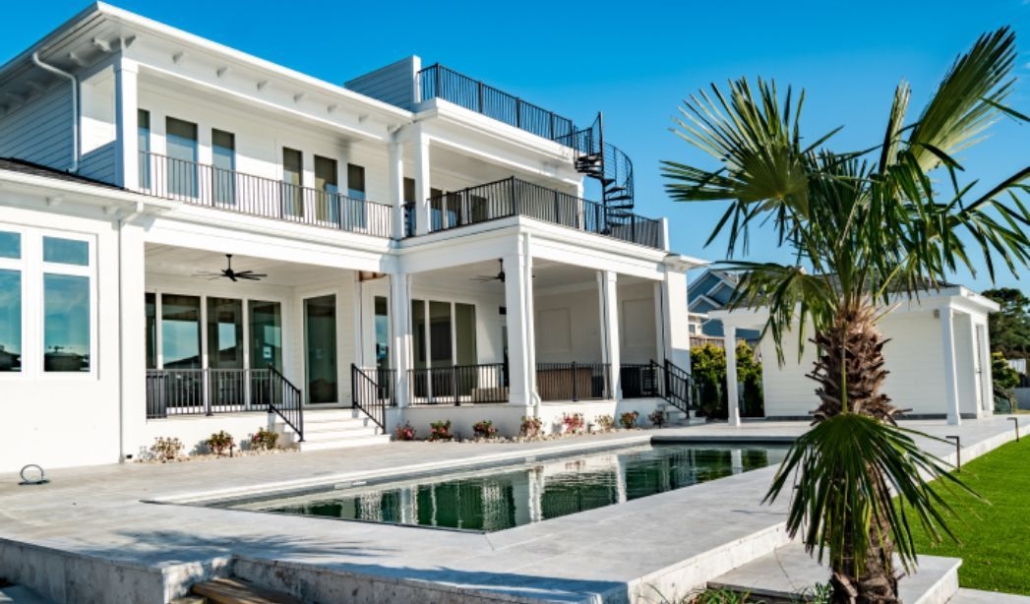
Curb appeal is everything, as it’s the first impression you and everyone else will get of your home. At this part of the process, you’ll determine how you want to arrange your outdoor living spaces (balconies, patios, pool, hot tub,lounging areas, sports court, etc.) and landscaping. Want a maintenance free exterior (consider the installation of river rock in planting beds, and artificial turf in lieu of gras)?
5. Materials Selection
Beyond your home’s aesthetic, the materials you choose can impact the way that it holds up as the years go by.
Selecting the right materials is not just about appearance; it’s also about durability, maintenance, and environmental impact. High-quality, sustainable materials can ensure longevity and reduce the need for frequent repairs or replacements.
Consider the local climate when choosing materials, as some may be better suited to withstand specific weather conditions, like humidity, heat, or cold. Energy efficiency is another critical factor, with materials like insulated windows and doors contributing to reduced energy costs and a more comfortable living environment.
Additionally, choosing non-toxic, eco-friendly materials can improve indoor air quality and contribute to a healthier home environment. The right combination of materials can elevate your home’s functionality, comfort, and overall value, making it a wise investment for the future.
6. Color Schemes
Do you want a neutral shade with some pops of color here and there or a bold palette with striking details at every corner? There are endless color combinations that can profoundly impact the aesthetic of your custom home.
The choice of color scheme sets the tone for your home’s interior and exterior.
Neutral tones can create a serene and timeless atmosphere, offering flexibility in decor and easy adaptability to future style changes. On the other hand, bold and vibrant colors can make a statement, reflecting your personality and adding character to your living space. When selecting colors, consider the lighting in each room, as it can significantly influence how the colors appear.
It’s also important to think about color continuity throughout the home to ensure a cohesive look. Experimenting with accent colors through accessories or feature walls can add depth and interest without overwhelming the space.
Remember, the colors you choose will shape the ambiance of your home, making it crucial to select a palette that resonates with your personal style and enhances your everyday living experience.
7. Customization Options
From walk-in closets to multi-car garages, customizing your home is where the little details take personal form. This is your opportunity to tailor every aspect of your home to your specific lifestyle and preferences.
Consider elements like spacious kitchens with state-of-the-art appliances for those who love cooking, or home theaters and game rooms for entertainment enthusiasts.
Outdoor living spaces, such as patios and pools, can also be designed to suit your relaxation and entertainment needs. Eco-friendly options, like solar panels or energy-efficient HVAC systems, can be incorporated for sustainability-conscious homeowners.
Don’t forget about the practicalities, like ample storage space or built-in smart home technology, which can significantly enhance the functionality and convenience of your home.
Ultimately, each customization option you choose is a step towards creating a home that is uniquely yours, reflecting your tastes, hobbies, and the way you live your life.
8. Design Elements
Find design elements that resonate with your chosen aesthetic, whether unique plumbing fixtures, a detailed fireplace mantle, or exposed beams.
These elements are the finishing touches that transform a house into a home, showcasing your personal style and attention to detail. For instance, custom cabinetry in the kitchen or bathrooms can add both elegance and functionality, while unique lighting fixtures can create ambiance and highlight key areas of your home.
Flooring choices, from hardwood to luxury tiles, also play a significant role in defining each room’s character. Architectural details like crown molding, wainscoting, or coffered ceilings can add a layer of sophistication and charm. Don’t overlook the power of window treatments and door hardware to complement your home’s overall theme.
Thoughtfully chosen design elements not only enhance the beauty of your home but also contribute to its comfort and livability, making your living space a true reflection of your personal taste.
9. Aesthetic Preferences
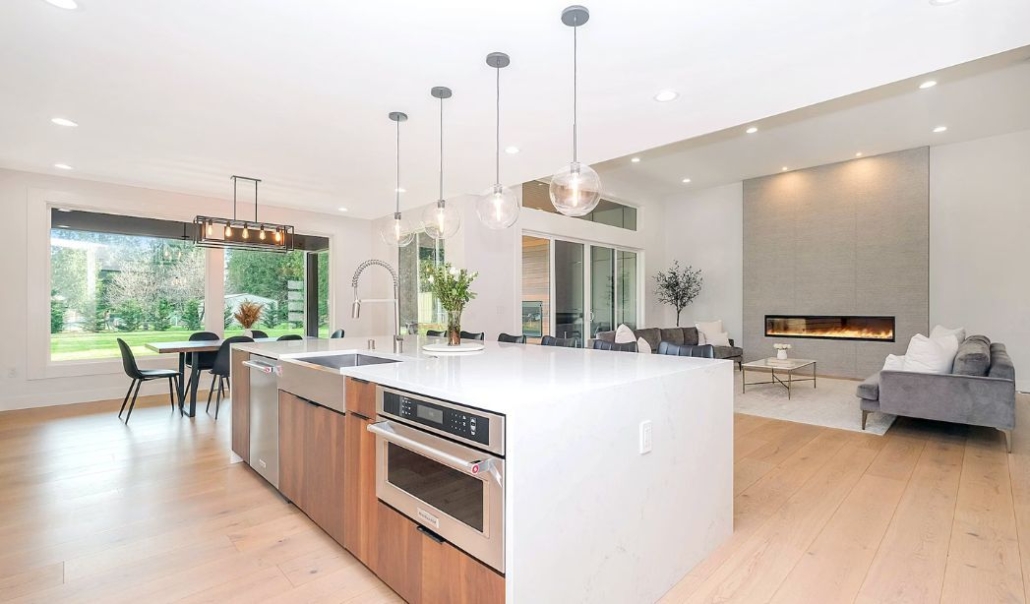
Your aesthetic will guide the custom home-building process, so consider any personal touches or motifs you’d like to incorporate.
This is the stage where your vision starts to materialize. Think about themes or styles that you are drawn to, such as minimalist, rustic, or contemporary, and how they can be woven into the design of your home.
Personal touches could include bespoke art installations, family heirlooms, or custom-designed features that reflect your hobbies or interests. The inclusion of unique architectural features, like arched doorways or custom-built staircases, can also add character and distinction to your home.
Landscaping is another aspect where personal style can be expressed, creating outdoor spaces that complement the architecture and provide a tranquil retreat.
Remember, these personal touches are what will make your home distinctly yours, providing a sense of comfort and belonging.
10. Functional Considerations
Of course, while aesthetics are important, ensuring the space is functional is half the battle of building a custom home. This is where having an experienced builder like RBC Homes on your side is helpful.
Contact us today to see how we can guide you through designing and building your dream custom home.
Budgeting and Financing
Before you begin your custom home-building project, it’s important that you understand the necessary budgeting and financing requirements to ensure a smooth process from start to finish.
When it comes to budgeting, you can consult with professional home-builders and architects early on to learn more about local costs, permitting, contingency funds, and more.
When you’re ready to take the first step, there are many financing options, some of the most popular of which include:
- Construction-Permanent Loans (with land advance)
- Traditional Mortgages
- Home Equity Loans
- Government Programs (VA, FHA, etc.)
Permits and Regulations
We can’t stress enough the importance of ensuring your custom home-building project follows the necessary permitting and regulatory requirements. Consulting with qualified professionals is the best way to make sure you’re compliant with and consider the following:
- Zoning Regulations
- Environmental Permits
- Building Codes
- Lot Setback Requirements
- Impact of Easements and Covenants
- Utility and Infrastructure Approvals
- Architectural Review Board Approvals
The failure to comply with proper permitting and regulatory requirements when building your own home can lead to costly financial and legal consequences.
Get in touch with us here at RBC Homes to learn more about the initial permitting process.
The Construction Process
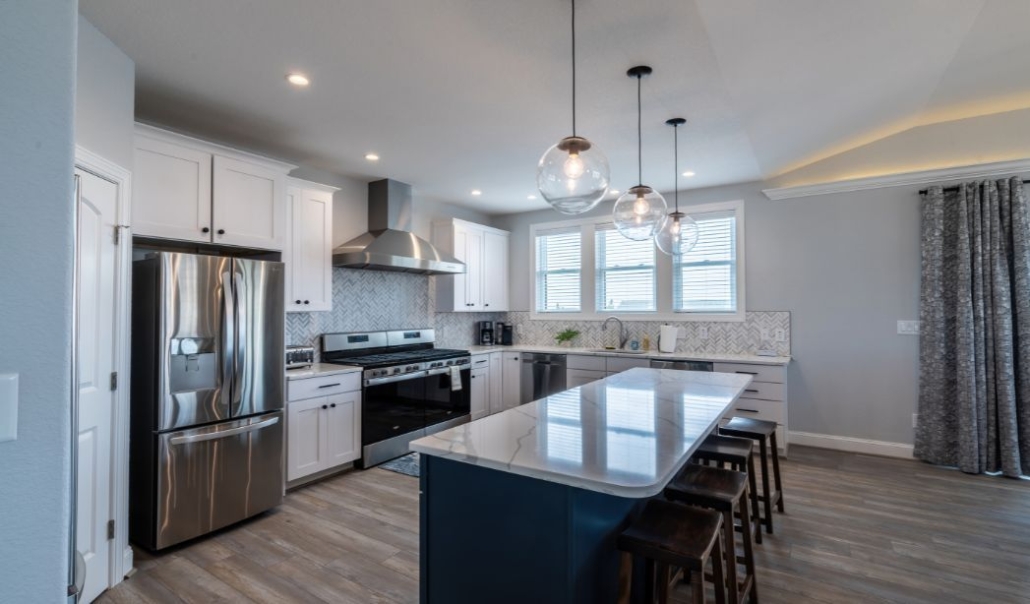
During the construction process, you see your design come to life. It’s an exciting process, to say the least, though it also requires careful planning and orchestration at each step.
Site Preparation
From clearing the land to creating a stable, level foundation, site preparation is the first step of the overall process.
This phase involves crucial tasks like soil testing to ensure the ground can support the structure, as well as any necessary grading or excavation work. Addressing drainage and erosion control at this stage is essential to prevent future structural problems. The process may also include removing any existing structures, trees, or debris to clear the way for construction. Ensuring access routes for construction equipment and materials is another key consideration.
The goal of site preparation is to create a solid and secure foundation for your home, setting the stage for a smooth and efficient building process. This meticulous groundwork is vital for the longevity and safety of your home, making it an indispensable part of the custom home-building journey.
Foundation Construction
Your foundation is integral to the rest of your home, meaning it has to be as strong as possible, and appropriate for the environment in which the home is built. If built in a coastal environment, you will need to consider elevating your home on pilings (with or without a grade beam which is both necessary and prudent when building on the beachfront). If constructed inland, determination must be made as to whether or not the environmental conditions will accommodate a basement or should the home be constructed on a concrete slab?
Framing and Structural Work
Your contractor will erect the floors, walls, and roof at this part of the construction process, creating the “skeleton” framework.
This stage is critical as it shapes the basic structure of your home and defines its overall dimensions and spatial layout. Precision in framing is essential for ensuring the structural integrity and alignment of your home. It’s also during this phase that window and door placements are established, which are key to your home’s functionality and aesthetics.
The type of materials used for framing, whether wood or steel, will depend on your design preferences and local building codes. This phase also involves implementing essential systems like plumbing and electrical conduits within the framework.
The completion of the framing and structural work gives you a tangible sense of your home’s scale and design, marking a significant milestone in the construction process.
Plumbing, Electrical, and HVAC “Rough-In” Installations
Once the basic structure is in place, plumbing, electrical, and HVAC systems will be installed before they’re closed in with drywall.
This stage involves laying the groundwork for essential utilities and services. The plumbing rough-in includes the installation of pipes for water and waste lines, carefully planned to ensure efficient water flow and accessibility for future maintenance.
Electrical rough-in involves running wires through the frame, setting up outlets, switches, and the main electrical panel to meet your home’s power needs and ensure safety. For the HVAC system, this is when ductwork is installed, considering optimal air flow and energy efficiency.
This phase requires skilled tradespeople to ensure that all installations comply with building codes and regulations. The completion of these systems is crucial as they form the backbone of your home’s functionality, providing comfort, convenience, and safety for years to come.
Insulation and Drywall
Insulation is added to regulate internal temperature before the structure is enclosed with drywall.
Consider the exterior wall thickness during planning, as it affects insulation thickness, impacting energy efficiency and costs. The right insulation type, whether fiberglass batts, spray foam, or foam boards, is crucial for thermal efficiency. Insulation installation in walls, floors, and ceilings is vital for comfort and noise reduction. After insulation, drywall is installed, transitioning from structural work to finishing, setting the stage for painting and interior design.
This phase is key to energy efficiency and aesthetic appeal.
Interior and Exterior Finishes
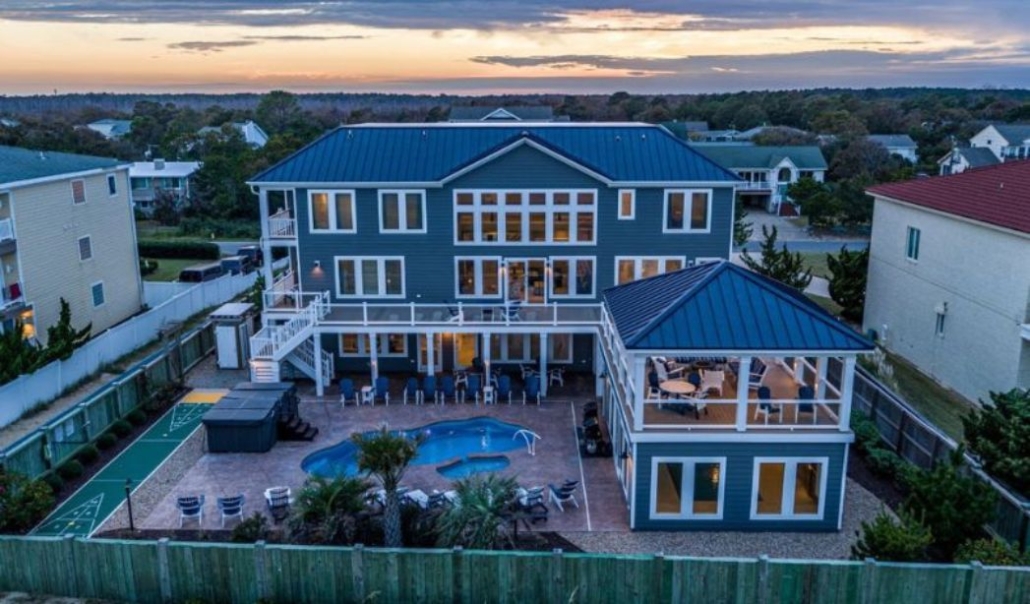
From interior paint to exterior siding to roofing, this part of the construction process is where your home truly begins to take shape.
During this stage, the selection of materials and colors for interior and exterior surfaces plays a pivotal role in defining the character of your home.
Interior painting sets the mood for each room, reflecting your personal style and creating the desired ambiance. The exterior siding choices not only contribute to the curb appeal but also provide durability and weather resistance. Roofing, a critical component, ensures the home’s protection from the elements and complements the overall architectural design.
These elements collectively bring your home’s design concept to life, making it visually appealing and functionally robust.
Flooring Installation
This step is crucial in defining the aesthetics and functionality of each room. The choice of flooring material should align with your lifestyle needs and design preferences.
Carpet offers warmth and comfort, ideal for bedrooms and living areas, while tile or marble provides a durable and elegant option for bathrooms and kitchens. Luxury Vinyl Plank (LVP) is a versatile choice, offering the look of hardwood with increased durability and moisture resistance, suitable for high-traffic areas.
Hardwood floors bring timeless beauty and can be customized with different stains and finishes.
Proper installation is key to ensure longevity and performance of the flooring, making this phase a significant milestone in realizing your vision for the home.
Cabinetry and Fixtures
Kitchens and bathrooms are typically the main focus here, as during this part of the process, you’ll add plumbing fixtures, lighting fixtures, cabinetry, counter-tops, backsplashes, and appliances. Do you need one or two refrigerators? What about ovens and dishwashers (need two)?
This phase is where functionality meets style. The selection of kitchen and bathroom fixtures, from faucets to sinks, should balance practicality with aesthetic appeal.
Lighting choices in these spaces can transform their look and feel, enhancing both ambiance and task efficiency. The design and installation of cabinetry are vital for storage and space optimization. Countertops and backsplashes not only add visual interest but also need to be durable and easy to maintain. Appliance choices, like deciding between one or two refrigerators, or the number of ovens and dishwashers, should reflect your cooking and lifestyle habits.
This stage is critical in creating spaces that are not only beautiful but also cater to your specific needs and daily routines.
Building Inspections and Final Walk-Thru
During the construction process, there will be periodic governmental inspections of your home at virtually every phase of construction. The Contractor must complete all construction activities and achieve approvals from the local Building Inspector. Before settling into your new custom built home, you’ll complete a final walk through with your Builder and create a final “punch-out” list with the Builder who will then complete the agreed “punch-out” work. Your home will be warranted by the Builder against defects for a period of one (1) year.
Landscaping
Lastly, you’ll move beyond the walls of your home to finish your custom landscaping and add final touches to your home’s outdoor living spaces.
This final stage transforms the exterior into a welcoming and functional extension of your home.
Custom landscaping, ranging from garden beds to water features, enhances the property’s aesthetics and can be tailored to suit your maintenance preferences. Outdoor living spaces, such as patios, decks, or outdoor kitchens, are designed for relaxation and entertainment, reflecting your lifestyle.
The choice of outdoor lighting, furniture, and decorative elements adds character and comfort.
This phase is crucial in creating a harmonious balance between your home’s interior and the natural environment, offering a seamless transition from indoor to outdoor living.
Quality Assurance
Every home we build here at RBC Homes comes with quality assurance standards. This means that we verify the overall structural integrity and functionality of each custom home while making sure every aspect of the home adheres to building codes.
We encourage our clients to work with us during the inspection process so they can see how their expectations align with the actual construction.
Safety and Security
Safety and security are vital concerns of ours here at RBC Homes, which is why we promote both construction site safety and emergency preparedness throughout each phase of the construction process.
We also urge clients to integrate safety and security features into their custom homes, including smart home surveillance technology, smart locks, secure entry points, and exterior lighting.
Conclusion
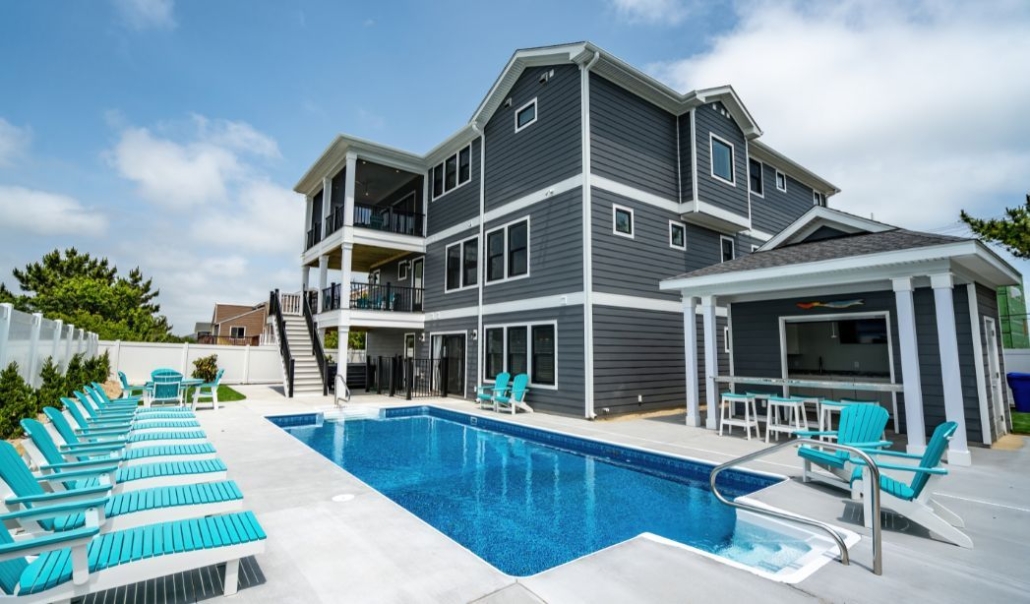
There’s nothing that can provide the same level of pride and satisfaction as building a custom home, and our team at RBC Homes would love to take that journey with you.
If you’re considering building your dream home, take the first step today and contact us. We look forward to working with you.
